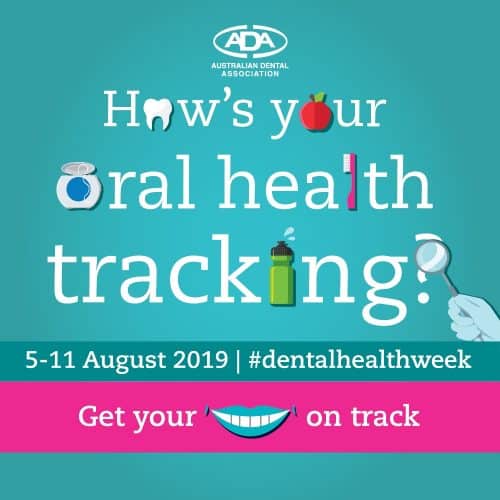
Dental Health Week 5-11 August 2019
We’ve said it before but because brushing is so fundamental to good oral health that we’re saying it again…..BRUSH YOUR TEETH!
If you’re like most people, you probably don’t give much thought to how you brush your teeth, beyond squeezing on some toothpaste and scrubbing back and forth. But as your dentist will tell you, how you brush your teeth matters a great deal. How often you brush, how long you brush, the kind of technique and the toothbrush you use all impact on the effectiveness of your brushing. For instance, did you know you should brush for a minimum of two minutes, twice a day? Most people don’t come close to brushing for that long, often brushing their teeth quickly and distractedly.
It’s all in the timing
To gain the maximum benefit from brushing your teeth, you should brush for at least two minutes morning and night. One fun way to make sure you spend time brushing your teeth is to
fire up your streaming service, and play your favourite pop song; kids especially benefit from this method.
Brushing with a manual toothbrush
Soft-bristled toothbrushes with a small head and a flexible neck are most effective. They remove plaque and debris from your teeth, without damaging your teeth and gums. Teeth should be cleaned systematically. Starting at the back with the toothbrush bristle at the gum line on a 45° angle, brushing gently in a circular motion. If you scrub too hard from side to side, you run the
risk of causing your gums to recede, as well as damaging the tooth enamel. Take care to brush carefully along the inner, outer and chewing surfaces. Make sure you tip the toothbrush so you can reach the inner front areas of the teeth, which are often missed. While it may seem strange at first to brush your tongue, it reduces the bacteria in your mouth and helps your breath stay fresh. All you need to do is push the bristles on the tongue and scrape gently forward. When you have finished brushing, try to spit out the toothpaste but don’t rinse with water. Leaving some toothpaste on your teeth gives your teeth some extra ongoing protection.
Brushing with a powered toothbrush
If you have limited dexterity, a powered toothbrush may be a better option. Kids enjoy the fun of powered toothbrushes, especially decorated with their favourite characters. They can also be programmed to run for two minutes, taking out the guesswork for kids and adults alike over brushing time. The position of the powered toothbrush should be the same as with a manual toothbrush, at 45° at the gum line. The big advantage of powered toothbrushes is that their oscillating-rotating heads supply all the movement. All you need to do is guide the brush slowly from tooth to tooth, stopping for a few seconds on each one, systematically following the contours of the teeth and the curve of your gums.
If you’re not sure which type of brush will be best for you or your family, check with your dentist.
General tips
Tempting as it is to think that pressing harder on your teeth equals a better clean, the fact is that too much pressure can damage your gums and tooth enamel. If the bristles are wearing out on your toothbrushes well before the three-month mark, you’re pressing too hard and you should ask your dentist to show you a less damaging technique. Replacing your brush, whether manual or powered, should take place when the bristles start to spread apart, or every three months, whichever comes first.
The importance of the right toothpaste
While there are a lot of toothpastes on the market, you should choose one that contains fluoride. When added to toothpaste, fluoride strengthens teeth, making them more resistant to attacks from sugar and acid, thereby preventing decay. Fluoride can also help remineralise (heal or reverse) early decay. Depending on your risk of dental decay your dentist will recommend a type of toothpaste best suited to you.
Fluoride toothpaste for children
Unless it’s recommended by your dentist, the general consensus is that you shouldn’t use toothpaste when cleaning the teeth of children under 18 months of age. Instead, use a small soft toothbrush and simply use tap water to wet the brush. Use a pea-sized amount of low fluoride toothpaste (sometimes labelled junior or children’s) for children aged 18 months to six years. Adults should always supervise children brushing their teeth until the age of eight to ensure they don’t swallow the toothpaste.
Fluoride toothpaste and risk of tooth decay
If you’re a person at high risk of developing tooth decay, your dentist may recommend you use a higher strength fluoride toothpaste.
You may be deemed a person of ‘high decay risk’ if you are:
you’re undergoing orthodontic treatment (braces)
your diet is high in sugar or acid
you have difficulty brushing your teeth due to arthritis or a disability
you have ‘Dry Mouth’, or low amounts of saliva
you’re living in an area without fluoridated water.
This Dental Health Week 5-11 August 2019 make your oral health a priority. Book an appointment on line today.
